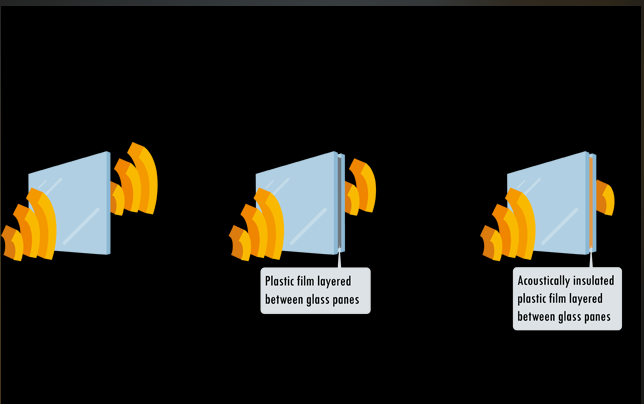NEWS CENTER
|
What acoustic glass isAt acceptable levels, outside noise often reaches around 35 decibels. Traffic can cause a dramatic increase in noise levels and reach around 70 dBs; Living under a flight path can mean excesses of 90 dBs, whilst near landing aircraft noise pollution can spike to well over 100 dBs. An Overview of Sound Insulation ClassesGlass thickness,PVB thickness,Spacer thickness in IGU affect the overall glass acoustic performance Glass thickness : Glass thickness,or glass unit weight per square meter is the deciding factor that affect the overall soundproof performance. Whether it’s single piece monolithic glass,laminated glass,or insulated glass,the thicker total glass thickness,the better sound transmission loss. Sample STC:
Laminated glass interlayer: PVB ,SGP or EVA especially acoustic PVB, give very good performance on the sound insulation:
The spacer thickness The spacer thickness used in insulated glass will also affect the STC,bigger spacer will have better STC. Each spacer make the sound transmittance loss around 10% of the spacer thickness.
Installation: Glazing is only half the battleIn order for a window fitted with acoustic glass to achieve optimum sound reduction, it must first be installed correctly. Soundproof glass also depends on the frame and fit. Ensuring an airtight installation, eliminating extra room between the wall and frame and properly sealing edges will all help achieve maximum performance. Whatever your project, if sound reduction is your goal, it is critical to let a certified craftsmen do the work. What Sound Class to Choose?Although Sound Class is standard in most homes today, it is usually better to choose acoustic PVB class to get more sound transmittance loss. Acoustic glazing can also be combined with thermal insulation and safety glass as well. This is provided by the particular construction of the glass itself which can achieve higher U-values (thermal insulation values). |




